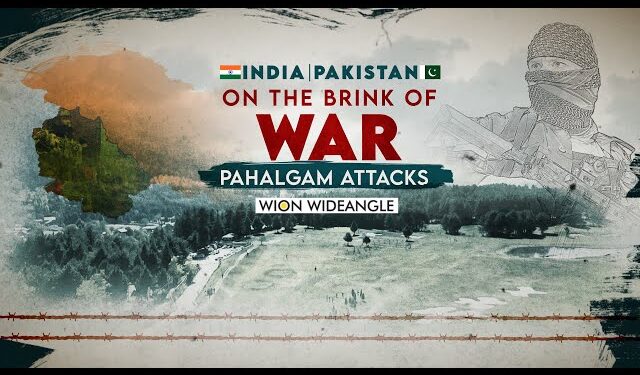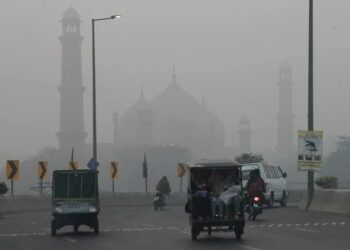Tensions rise between India and Pakistan over PoK. Both nations stand ready with troops and weapons as the situation grows tense.
India-Pakistan War:
India and Pakistan have a long history of rivalry, tension, and conflict in their relationship. But in recent months, the situation has taken a sharp turn toward possible military conflict, especially over the region of Pakistan-occupied Kashmir (POK). Recent reports and military movements have raised alarm bells.
Immediately following the tragic Pahalgam incident in India, Pakistan is holding extensive military exercises close to the Line of Control (LOC). This article will break down the current tensions, the military activities on both sides and what this might mean for the future of South Asia.
Long History of Conflict:
The India-Pakistan War is not a new topic. Since 1947, when both countries became independent, they have fought several wars:
- 1947-48 War over Kashmir, soon after Partition
- 1965 War, again centred on Kashmir
- The war of 1971, which resulted in Bangladesh’s formation
- The Kargil Conflict of 1999, in which Pakistani troops invaded Indian territory
These wars have left a deep scar on both nations, and Kashmir remains the biggest flashpoint.
Sparked the Recent Tension:
The immediate cause of rising tension is the Pahalgam attack in Jammu and Kashmir, where Indian security forces were targeted, leading to several deaths. India has blamed Pakistan-based militants for the attack, increasing anger in New Delhi.
In response, Pakistan’s military carried out large-scale drills near the Loc, with live-fire demonstrations including:
- Heavy artillery
- Tanks
- Missiles
- Drones
This has sent a clear message that Pakistan is preparing for any potential military action from India.
Is India Planning an Attack on Pok?
Indian media reports and military analysts have raised the possibility that India might consider an attack or a surgical strike on Pok.
- After the Pahalgam attack, there is high public and political pressure on the Indian government to respond strongly.
- India has increased its military presence near the Loc.
- Recent statements from Indian officials have hinted at regaining territories under Pakistan’s control.
However, it is important to note that while the media may suggest invasion, official confirmation from the Indian government is missing.
Pakistan’s Response:
Pakistan has responded quickly:
- Troop reinforcements have been sent to the Loc.
- Advanced weapons, including missile systems, have been positioned.
- Fighter jets have been put on alert.
- The Pakistan Army has cautioned against India’s “misadventure.”
This strong military posture shows that Pakistan is ready to respond if India takes any action across the border.
Why is Pok important?
Both nations assert claims to the area known as Pakistan-occupied Kashmir (POK):
- For India, PoK is legally and historically part of its territory.
- For Pakistan, PoK is a vital region that connects it to China through the China-Pakistan Economic Corridor (CPEC).
Any conflict over PoK could have huge consequences, not only for India and Pakistan but also for China, a close ally of Pakistan.
Global Concerns:
There is more to the India-Pakistan War than meets the eye. The world watches closely because:
- Both countries are nuclear-armed.
- A war between them could trigger a humanitarian crisis.
- The conflict could disrupt the region’s stability, impacting countries like China, Afghanistan, Iran, and even the U.S.
World powers like the United States, Russia, and China have repeatedly called for restraint and dialogue between the two neighbours.
Military Strength Comparison:
Let’s look at how India and Pakistan compare militarily:
| Category | India | Pakistan |
| Active soldiers | ~1.4 million | ~654,000 |
| Tanks | ~4,700 | ~2,200 |
| Fighter jets | ~700 | ~450 |
| Nuclear warheads | ~164 | ~170 |
| Defense budget | ~ $73 billion | ~ $11 billion |
Although India has more troops, Pakistan’s military is renowned for its skill, knowledge, and robust intelligence system.
Potential Outcomes:
If the situation worsens, several scenarios could unfold:
1. Limited Border Skirmishes
Both countries could engage in small-scale clashes along the LoC, as seen in past years.
2. Surgical Strikes
India could launch targeted attacks on militant camps inside PoK, similar to the 2016 surgical strikes.
3. Full-Scale War
This is the worst-case scenario and could lead to enormous destruction, loss of life, and even the risk of nuclear exchange.
4. Diplomatic Solution
International pressure could push both sides to negotiate and reduce tensions, preventing war.
Why Dialogue Is Important?
Experts agree that dialogue is the only lasting solution to the India-Pakistan conflict. Military action may provide short-term satisfaction but will not resolve:
- The Kashmir dispute
- Cross-border terrorism
- Humanitarian suffering on both sides
Track II diplomacy, backchannel talks, and confidence-building measures are urgently needed to avoid escalation.
What Can Ordinary Citizens Do?
While governments control military decisions, ordinary people on both sides can:
- Promote peace and understanding through social media.
- Avoid spreading hate speech or false information.
- Support peace initiatives and people-to-people contact.
A peaceful South Asia is in the best interest of everyone, from schoolchildren to business owners.
Media’s Role:
The media has a big responsibility. Instead of promoting war hysteria, it should:
- Provide factual reporting.
- Highlight peace efforts.
- Avoid sensational headlines that increase public fear and anger.
Responsible journalism can make a huge difference during times of conflict.
Final Thoughts:
The idea of an India-Pakistan war is dreadful, but it is not inevitable. While military tensions are high, both governments can step back, listen to international advice, and choose dialogue over destruction.
For India, the pain of terror attacks is real, and demands for action are strong. For Pakistan, defending its territory and showing strength are equally important. But in the end, no war has ever solved the Kashmir dispute. If leaders on both sides focus on diplomacy instead of bullets, they can create a safer and better future for the 1.6 billion people living in India and Pakistan.
























